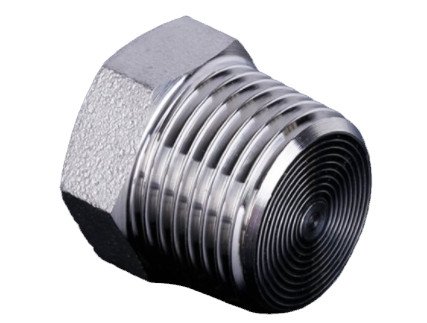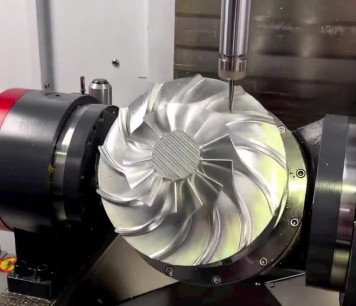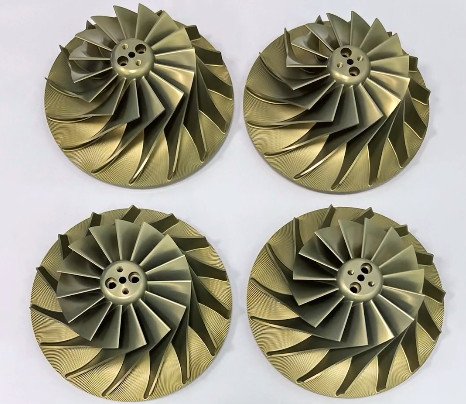Machining plugs are critical components used in various industrial applications to seal, protect, or close openings in machinery, pipelines, or equipment. These precision-engineered parts ensure system integrity, prevent leaks, and maintain operational efficiency. This article provides a detailed examination of machining plugs, including their types, materials, manufacturing processes, and technical specifications. The content is structured to offer a clear, technical, and systematic understanding of machining plugs for professionals in engineering and manufacturing.
Definition and Purpose of Machining Plugs
A machining plug is a mechanical component designed to seal or close an opening in a system, such as a pipe, valve, or machine housing. These plugs are typically cylindrical or tapered and are manufactured to precise tolerances to ensure a secure fit. Their primary functions include preventing fluid or gas leaks, protecting internal components from contaminants, and maintaining pressure or structural integrity within a system. Machining plugs are used across industries such as oil and gas, automotive, aerospace, and manufacturing.
The design of a machining plug depends on its intended application, including factors like pressure, temperature, and environmental conditions. For example, plugs used in high-pressure pipelines require robust materials and precise machining to withstand extreme conditions, while plugs in low-pressure systems may prioritize cost-effectiveness and ease of installation.
Types of Machining Plugs
Machining plugs come in various types, each suited to specific applications and requirements. Below is a detailed overview of common types of machining plugs, including their design and use cases.
| Type | Description | Applications |
|---|---|---|
| Threaded Plugs | Cylindrical plugs with external or internal threads for secure fastening. | Pipelines, hydraulic systems, and pressure vessels. |
| Tapered Plugs | Conical plugs that create a tight seal through press-fit or expansion. | Automotive engines, HVAC systems, and plumbing. |
| Expansion Plugs | Plugs that expand when inserted to form a tight seal. | Heat exchangers, boilers, and engine blocks. |
| Welded Plugs | Plugs permanently welded to seal openings. | High-pressure systems and structural components. |
| Push-In Plugs | Plugs inserted without threading, often for temporary sealing. | Maintenance, shipping, and low-pressure systems. |
Threaded Plugs
Threaded plugs feature external or internal threads that allow them to be screwed into a corresponding threaded opening. They are commonly used in systems requiring frequent access, such as hydraulic or pneumatic systems. Threaded plugs are manufactured to standards like NPT (National Pipe Thread) or BSP (British Standard Pipe) to ensure compatibility. Key parameters include thread pitch, diameter, and material strength, which must align with the system’s pressure and temperature requirements.
Tapered Plugs
Tapered plugs, also known as taper plugs, are designed with a conical shape that creates a tight seal when pressed into an opening. These plugs are often used in applications where a secure, leak-proof seal is critical, such as in automotive engines or plumbing systems. The taper angle and surface finish are critical parameters, as they affect the plug’s sealing performance.
Expansion Plugs
Expansion plugs are designed to expand upon installation, creating a tight seal against the inner surface of an opening. They are commonly used in heat exchangers and engine blocks, where thermal expansion and contraction are considerations. The plug’s material and expansion mechanism (e.g., mechanical or thermal) determine its suitability for specific applications.
Welded Plugs
Welded plugs are permanently fixed by welding, ensuring a robust and durable seal. These plugs are used in high-pressure or high-temperature environments, such as pipelines or pressure vessels. The welding process requires precise control to avoid defects, and material compatibility between the plug and the system is essential.
Push-In Plugs
Push-in plugs are simple, non-threaded components inserted into an opening for temporary or low-pressure sealing. They are often used during manufacturing or shipping to protect internal components from dust or debris. These plugs are typically made from plastic or soft metals and are designed for easy installation and removal.
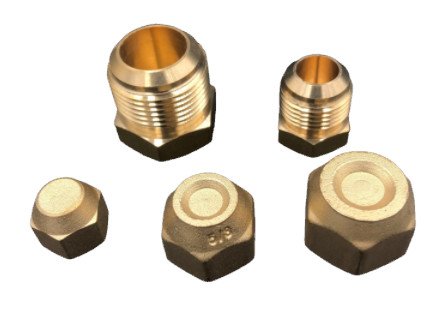
Materials Used in Machining Plugs
The choice of material for machining plugs depends on the application’s environmental conditions, pressure, and chemical exposure. Below is a table summarizing common materials and their properties.
| Material | Properties | Applications |
|---|---|---|
| Stainless Steel | Corrosion-resistant, high strength, durable. | Chemical processing, marine environments. |
| Brass | Good corrosion resistance, machinable. | Plumbing, low-pressure systems. |
| Aluminum | Lightweight, corrosion-resistant. | Aerospace, automotive components. |
| Plastic (e.g., Nylon, PTFE) | Cost-effective, chemical-resistant. | Temporary seals, low-pressure systems. |
| Carbon Steel | High strength, cost-effective. | Oil and gas pipelines, structural applications. |
Material Selection Considerations
Selecting the appropriate material involves evaluating factors such as:
- Corrosion Resistance: Stainless steel or brass is preferred in corrosive environments, such as marine or chemical processing applications.
- Pressure and Temperature: High-pressure systems require materials with high tensile strength, such as carbon steel or stainless steel.
- Cost: Plastic plugs are cost-effective for temporary or low-pressure applications, while metals are used for durability.
- Chemical Compatibility: Materials must resist degradation from exposure to specific chemicals in the system.
Manufacturing Processes for Machining Plugs
Machining plugs are produced using precision manufacturing techniques to meet strict tolerances and performance requirements. The following processes are commonly used:
CNC Machining
Computer Numerical Control (CNC) machining is the primary method for producing high-precision plugs. CNC lathes and mills create threads, tapers, or custom shapes with tolerances as tight as ±0.001 inches. This process ensures consistency and accuracy, especially for threaded and tapered plugs.
Forging
Forging is used to produce plugs with high strength and durability, particularly for high-pressure applications. The process involves shaping metal under high pressure, resulting in a dense, uniform structure. Forged plugs are often used in oil and gas or aerospace industries.
Injection Molding
For plastic plugs, injection molding is a cost-effective manufacturing method. This process is ideal for producing large quantities of push-in or temporary plugs with consistent dimensions. Materials like nylon or PTFE are commonly used in injection molding.
Surface Treatments
Surface treatments, such as anodizing, plating, or coating, enhance the plug’s performance. For example, anodizing aluminum plugs improves corrosion resistance, while PTFE coatings reduce friction for easier installation.
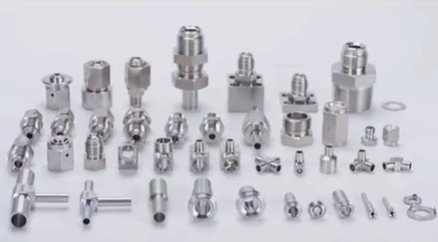
Technical Specifications and Parameters
Plugs machining are designed to meet specific technical requirements. Key parameters include:
- Diameter: Ranges from 1/8 inch to several inches, depending on the application.
- Thread Specifications: For threaded plugs, standards like NPT, BSP, or metric threads define pitch and diameter (e.g., 1/2-14 NPT).
- Pressure Rating: Plugs are rated for pressures from 100 psi to over 10,000 psi, depending on material and design.
- Temperature Range: Materials like stainless steel can operate from -200°C to 800°C, while plastics are limited to lower temperatures.
- Tolerance: Precision machining ensures tolerances of ±0.001 inches for critical applications.
- Surface Finish: Measured in Ra (roughness average), typically 16-32 microinches for sealing surfaces.
Applications of Machining Plugs
Machined plugs are used in a wide range of industries and applications, including:
- Oil and Gas: Sealing pipelines, valves, and pressure vessels.
- Automotive: Closing openings in engines, transmissions, and cooling systems.
- Aerospace: Protecting components during manufacturing or maintenance.
- Manufacturing: Temporary sealing during machining or assembly processes.
- HVAC: Sealing ducts or refrigerant lines.
Conclusion
Machining plugs are essential components in industrial systems, offering reliable sealing and protection across various applications. By understanding their types, materials, manufacturing processes, and technical specifications, engineers and manufacturers can select the appropriate plug for their needs. Precision manufacturing and proper installation ensure optimal performance, making machining plugs a critical element in maintaining system efficiency and safety.
FAQs about Plugs
What is a plug used for?
A plug is a mechanical component designed to seal, block, or close off pipes, holes, or equipment ports. It prevents leaks of fluids (liquids/gases), blocks the entry of dust, debris, or contaminants, and protects internal components from damage. Common uses include sealing unused pipe ends, covering open ports during maintenance, or securing temporary closures in industrial systems.
Are plugs resistant to chemicals or extreme temperatures?
Stainless steel (316 grade) and Hastelloy plugs resist harsh chemicals (e.g., acids, salts).
High-temperature plastics (e.g., PEEK) or metal plugs withstand temperatures up to 600°C (1112°F), while rubber plugs are limited to lower ranges (typically -40°C to 150°C / -40°F to 302°F).
Can custom plugs be manufactured?
Yes, we offer custom plugs tailored to specific sizes, materials, or applications (e.g., unique threads, specialized coatings for corrosion resistance). Contact our engineering team with your requirements, and we’ll provide a quote and design timeline.
